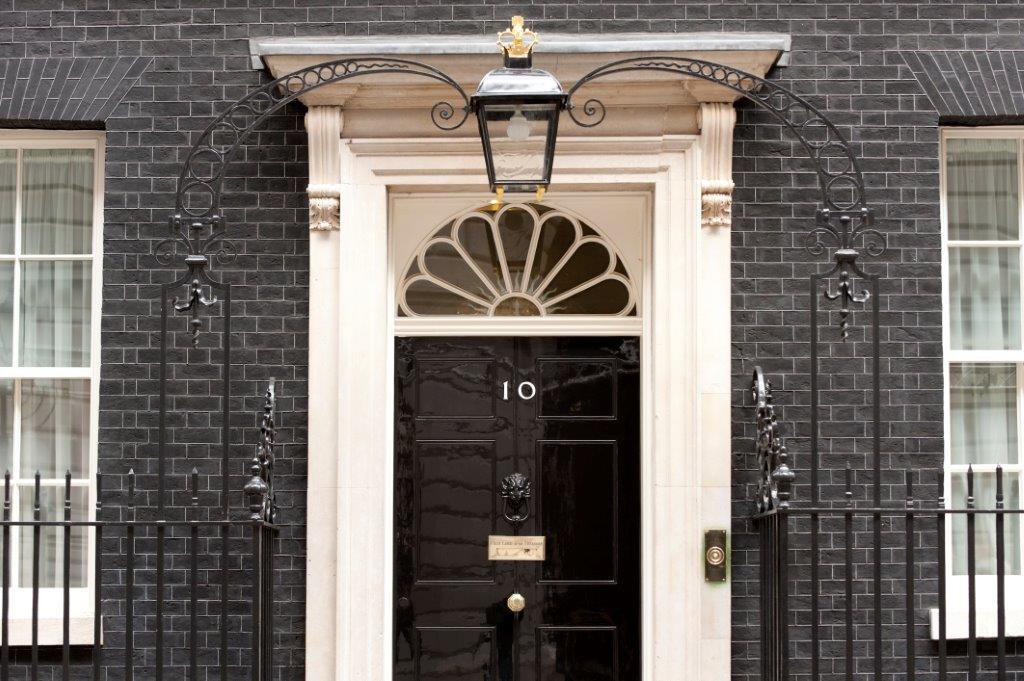What are the Dissolution Honours?
Dissolution Honours lists have been published in The Gazette since 1874. But what exactly are Dissolution Honours and how do they differ to Resignation Honours? Here's what you need to know about the Dissolution Honours.

What is a Dissolution Honours list?
The Dissolution Honours are a list of people nominated to receive honours after the Dissolution of Parliament prior to a general election. The Parliament of the United Kingdom is normally dissolved by the Sovereign exercising his or her prerogative powers, on the request of the Prime Minister (as per the Dissolution and Calling of Parliament Act 2022). Polling day takes place automatically 25 working days later, as determined by the Representation of the People Act 1983 (as amended by the Dissolution and Calling of Parliament Act 2022).
Typically, a Dissolution Honours list allows an outgoing prime minister to suggest honours for politicians, including retiring MPs. Many are made Life Peers and the list may include knighthoods for those who have served in Parliament. Appointments to the Privy Council of the United Kingdom are also made.
The honours committees (who assess the likes of the Queen’s Birthday and New Year honours) do not vet the Dissolution Honours list but it is submitted to the Cabinet Office for ‘probity and propriety checks’. In the case of life peerages, the House of Lords Appointments Commission assesses the list.
Dissolution Honours should not be confused with Resignation Honours, which are honours granted at the request of an outgoing UK Prime Minister following his/her resignation.
Why is the Dissolution Honours list controversial?
Historically, the Dissolution Honours, as well as in the Prime Minister’s Resignation Honours, have been met by some controversy, with accusations of repaying party donations and political favour with life peerages.
In the 1920s, allegations that titles were sold during David Lloyd George's time as prime minster led to the passing of the Honours (Prevention of Abuses) Act 1925. The Life Peerages Act 1958 also resulted in a dramatic reduction of hereditary peerages in favour of life peerages, meaning titles and membership in the House of Lords could not be inherited by children.
Following controversy in 2006 when four life peer nominations were rejected by the House of Lords, in 2011 the Cabinet Office said that all nominees for senior honours were "checked against the lists of donations maintained and made public by the Electoral Commission", adding the "Main Honours Committee must satisfy itself that a party political donation has not influenced the decision to award an honour in any way."
Full list of Dissolution Honours
The Gazette has published Dissolution Honours lists in supplements since 1874. See all Dissolution Honours lists below:
- 1874 William Ewart Gladstone (Gazette issue 24068 and Gazette issue 24071)
- 1885 William Ewart Gladstone (Gazette issue 25486)
- 1892 Robert Gascoyne-Cecil (Gazette issue 26326 and Gazette issue 26328)
- 1895 Lord Rosebery (Gazette issue 26639)
- 1922 David Lloyd George (Gazette issue 32766)
- 1924 Ramsay MacDonald (Gazette issue 32990)
- 1929 Stanley Baldwin (Gazette issue 33512)
- 1931 Ramsay MacDonald (Gazette issue 33772)
- 1945 Winston Churchill (Gazette issue 37116)
- 1950 Clement Atlee (Gazette issue 38868 and Gazette issue 38888)
- 1959 Harold Macmillan (Gazette issue 41818)
- 1964 Alec Douglas-Home (Gazette issue 43502)
- 1966 Harold Wilson (Gazette issue 43981)
- 1970 Harold Wilson (Gazette issue 45112)
- 1974 (February) Edward Heath (Gazette issue 46254)
- 1974 (October) Harold Wilson (Gazette issue 46422)
- 1979 James Callaghan (Gazette issue 47868)
- 1983 Margaret Thatcher (Gazette issue 49424)
- 1987 Margaret Thatcher (Gazette issue 51014)
- 1992 John Major (Gazette issue 52943)
- 1997 John Major (Gazette issue 54743)
- 2001 Tony Blair (Gazette issue 56222)
- 2005 Tony Blair (Gazette issue 57639)
- 2010 Gordon Brown (Gazette issue 59459)
- 2015 David Cameron (Gazette issue 61359)
- 2019 Boris Johnson (Gazette issue 63874)
- 2024 Rishi Sunak (Gazette issue 64480)
See also
The history of Prime Minister's Resignation Honours
What is the difference between a CBE, OBE, MBE and a knighthood?
Birthday and New Year honours lists (1940 to 2020)
Birthday and New Year honours lists (1860 to 1939)
Find out more
Representation of the People Act 1983 (Legislation)
Dissolution and Calling of Parliament Act 2022 (Legislation)
Honours committees (GOV.UK)
How the honours system works (GOV.UK)
Honours (Prevention of Abuses) Act 1925 (Legislation)
Life Peerages Act 1958 (Legislation)
Images
Getty Images
Publication updated
7 August 2024
Any opinion expressed in this article is that of the author and the author alone, and does not necessarily represent that of The Gazette.
